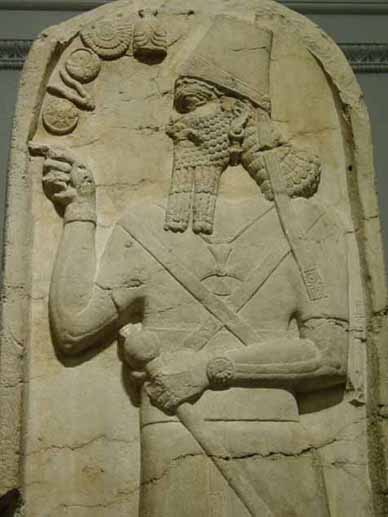Design, to me, is part psychology, part sociology, and part magic. A good decorator should know what's going on in someone's marriage and how their kids are doing in school.
Collective Behavior, Social Movements, and Mass Publics
(Part B)
by
Charles Lamson
Protest Cycles, Action Frames, and Charisma
In analyzing the revolutions that have occurred during the past 500 years, sociologist Charles Tilly concludes that there are no "neat formulations of standard, recurrent conditions for forcible transfers of state power" (1993, European Revolutions, 1492-1992, p. 237). However, he agrees with other social scientists who have pointed out that revolutionary social movements and other forms of protest often in occur in cycles or waves of unrest. He cites the waves of protests that swept through Europe and North America in the late 1960s and the current wave of fundamentalist movements in much of the contemporary world. During such waves, he observes:
 |
One set of demands seems to incite another, social movement organizations compete with each other for support, demands become more extreme for a while before subsiding. As this happens, activists often experiment with new ways of organizing, framing their demands, combating their enemies and holding on to what they have. (1993, p. 13)
Waves of Protest No theory adequately explains why particular waves of protest sweep through societies. But Sydney Tarrow (1994, Power in Movement: Social Movements, Collective Action, and Politics), another astute student of protest cycles, argues that waves of protest often result from major social shocks such as international economic recession, the end of a period of warfare, or hasty actions by one or more governments. Such an episode occurred in Poland in the early 1980s when the communist regime announced large increases in the price of bread. The movement that ensued, known as Solidarity, demonstrated the weakness of that regime.
During cycles of protest, social conflicts of all kinds increase dramatically, often resulting in violent episodes of collective behavior---riots, demonstrations, and counter-demonstrations. The heightened sense that change is in the air, often brought on by the activities of a few "early risers" among protest leaders (e.g., Lech Walesa and Mahatma Gandhi), triggers a variety of processes, including imitations of the protest elsewhere (e.g., Martin Luther King, Jr., and Nelson Mandela, who followed the example set by Gandhi). The wave of protests may also build momentum through diffusion, often spreading from larger cities to smaller towns and rural areas. New ideologies arise to justify collective action and help the movement mobilize a following (Tarrow, 1994).
Collective Action Frames The old saying that "the pen is mightier than the sword" refers to the power of ideas to shape our view of society. In the twentieth century we saw the revolutionary power of ideas embodied in The Communist Manifesto of Karl Marx and Frederick Engels, Hitler's Mein Kampf ("My Struggle"), and the "Little Red Book" containing the sayings of Chairman Mao Ze-dong. In more recent times such works as Dr. Theodore John Kaczynski's Industrial Society & Its Future and Graham Hancock's Magician of the Gods have presented ideas that motivate various revolutionary movements on a global scale. Millions of people latch onto these concepts, not because they are incapable of forming their own ideas but because all of us are continually trying out ideas that seem to explain our times and help us make sense of our experiences in society. When faced with quandaries about what to do, what actions we should take for support, we often seek out concepts that are phrased as collective action frames, sets of beliefs and interpretations of events that inspire and justify social movements (Snow and Benford, 1992, Master Frames and Cycles in Protest. In A. D. Morris & C. M. Mueller, Eds, Frontiers in Social Movement Theory). There are many examples of collection action frames in the seminal work of William Gamson on this subject.

Gamson (1992, Talking Politics) is one of the leading students of political activism in the United States. His research on social movements focuses on the mental frameworks people develop in their thinking about social issues. He notes that social movements strive to offer one or more collective action frames. These are ways of thinking that justify the need for and desirability of a particular course of action. After studying the writings and speeches of activists and many different social movements, Gamson concluded that collective action frames have three important components:
Charisma Leadership plays an extremely important part in the success or failure of revolutionary social movements. The leaders of such movements are often said to have almost supernatural powers to inspire and motivate masses of followers. Max Weber (1968, The Concept of Citizenship. In S. N. Eisenstadt, Ed., Max Weber on Charisma and Institution Building) called the ability charisma. A charismatic leader appears to possess extraordinary "gifts of the body and spirit" that mark him or her as specially chosen to lead. The voices that Joan of Arc heard, which convinced her to take up arms to save France, gave her the inspired commitment to her cause, a central feature of charisma. Mahatma Gandhi, a charismatic leader, swayed the Indian masses with his almost supernatural spirituality and courage. Similarly, the extraordinary gifts of oratory, faith, and energy displayed by Martin Luther King, Jr., allowed him to emerge as the most influential leader of the American civil rights movement.
A movement's followers also may attribute special powers to their leader. This process may produce additional myths about the leader's powers and add to whatever personal magnetism the leader originally possessed. For example, Hitler was no doubt a fiery orator, but his followers frenzied reception of many of his ideas contributed to the perception that he possessed exceptional charisma.

The charisma of the leader may eventually pose problems for the movement. Every social movement must incorporate the goals and gifts of its leaders into the structure of the movement and eventually into the institutions of society. But how can this be done without losing track of the movement's original purpose and values? Scholars who follow Weber's lead in this area of research have termed this problem the institutionalization of charisma (Shils, 1970, Tradition, Ecology, and Institution in the History of Sociology. Daedalus, 99, 760-825). Weber recognized that the more successful a movement becomes in taking power and assuming authority, the more difficult it is to retain the zeal and motivation of its charismatic founders. Once the leaders have power and can obtain special privileges for themselves, they tend to resist continued efforts to eliminate inequalities of wealth and power. Perhaps the most instructive example of this problem is the institutionalization of the ideals of Marx and Lenin in the organization of the Bolshevik party in Russia After the revolution of 1917.
"Workers of the World, unite," Marx urged in The Communist Manifesto; "you have nothing to lose but your chains" (Marx & Engels, 1969/1848). The vision of a society in which poverty, social injustice, repression, war, and all the evils of capitalism would be eliminated formed the core of Marxian socialism. The founders of the Bolshevik party realized, however, that revolutions are not made with slogans and visions alone (Schumpeter, 1950, Capitalism, Socialism, and Democracy). The unification of the workers required an organization that not only would carry forward the revolution but also would take the lead in mobilizing the Russian masses to work for the ideals of socialism. The charismatic leader who built this organization was Vladimir Ilyich Lenin.
Under the leadership of Lenin (and far more ruthlessly under his successor Joseph Stalin), any Bolshevik who challenged party discipline was exiled or killed. Because the goals of the Bolsheviks were so radical and the need for reform so pressing, Lenin and Stalin argued that the party had to exert total control over its members in order to prevent spontaneous protests that might threaten the party's goals. By the same logic, other parties had to be eliminated and dissenters imprisoned. Such efforts by an elite to exert control over all forms of organizational life in a society are known as totalitarianism. All social movements that believe the ends they seek justify the means used to achieve them risk becoming totalitarian because they sacrifice the rule of law and the ideal of democratic process to gain power (Harrington, 1987, The Next Life: The History of a Future; Howe, 1983, 1984 Revisited: Totalitarianism in Our Century).

Co-optation Weberian theory predicts that social movements will institutionalize their ideals in a bureaucratic structure. Moreover, the more successful they are in gaining the power to change society, the more they will be forced to control the activities of their members. In fact, once a movement is institutionalized, with an administration and bureaucratic rules, its leaders tend to influence new charismatic leaders to become part of their bureaucracy, a process known as co-optation. In the labor movement, for example, maverick leaders who demand reform and instigate protests in their plants are often given inducements such as jobs in the uniform administration to keep them under control (Geschwender, 1977, Class, Race, and Worker Insurgency; Kornhauser, 1952, The Negro Union Official: A Study of Sponsorship and Control. American Journal of Sociology, 57, 443-452). In politics, local party leaders may identify and co-opt a local leader who they think might pose a threat in the future, offering inducements such as support in an election campaign and return for loyalty to the party.
*MAIN SOURCE: SOCIOLOGY IN A CHANGING WORLD, 6TH ED., 2003, WILLIAM KORNBLUM, PP. 223-226*
end
|

No comments:
Post a Comment